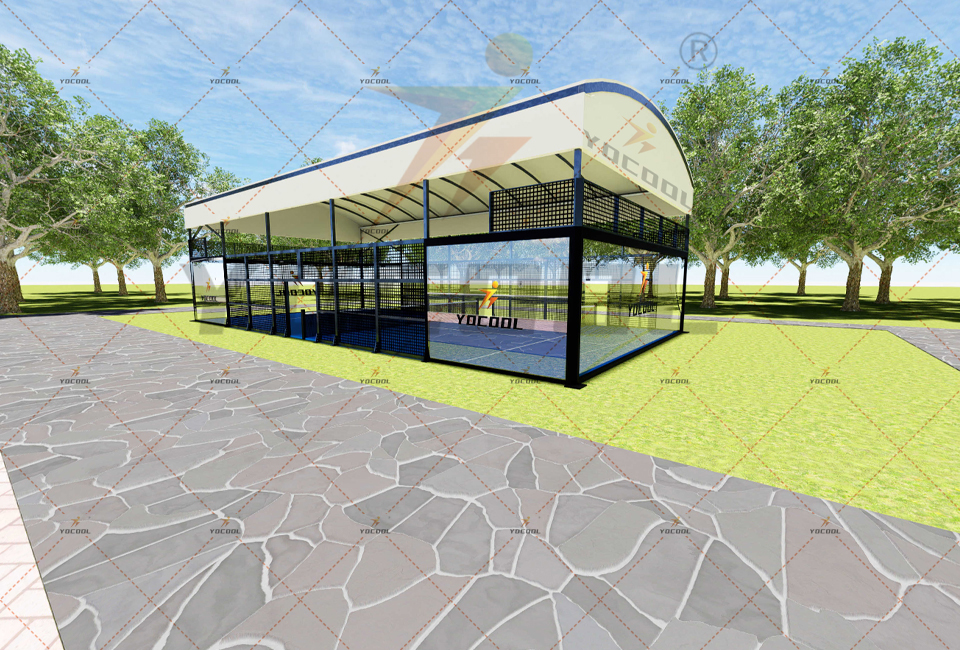

The Rise of Padel A Comparison with Tennis and Insights into Production
Introduction
In recent years, the sport of padel has surged in popularity alongside the age-old game of tennis. As both sports share fundamental similarities yet cater to different audiences, an examination of their progression, especially concerning their respective manufacturing processes, reveals fascinating insights into the future of racquet sports.
The Basics of Padel and Tennis
Padel, which originated in Mexico in the 1960s, is played on a smaller enclosed court, typically about one-third the size of a tennis court. The equipment consists of solid, stringless racquets and a lightweight ball. Players can utilize the walls surrounding the court, making for a dynamic and strategic gameplay reminiscent of squash. Tennis, on the other hand, involves traditional racquets with strings and is played on larger courts without walls, emphasizing power and endurance.
Manufacturing Processes
The production of sports equipment, whether for padel or tennis, involves distinct methodologies reflecting the unique requirements of each game
.Tennis Manufacturing

The manufacturing of tennis racquets has evolved tremendously since the wooden frames of the past. Modern racquets are constructed using advanced materials such as graphite, carbon fiber, and various composites to optimize performance regarding balance, weight, and durability. The manufacturing process involves several steps 1. Material Selection Choosing the right materials is crucial for performance. Graphite provides strength and lightweight characteristics, while composites can enhance flexibility and control. 2. Molding and Shaping The racquets are cast in molds to form their structure, ensuring uniformity in size and shape. 3. Stringing After the frame is formed, it is strung with synthetic gut or polyester strings to determine the racquet's feel and response. The tension of the strings can significantly affect performance. 4. Quality Control Each racquet is rigorously tested to meet professional standards, ensuring that they are capable of withstanding the challenges of competitive play.
Padel Manufacturing
The production of padel racquets shares certain similarities with tennis but diverges in notable aspects due to the unique style of play associated with padel 1. Materials Padel racquets are generally made of foam or EVA (ethylene-vinyl acetate) for the core, with a solid surface often composed of fiberglass or carbon fiber. This combination allows for a lightweight yet resilient product capable of absorbing shocks from ball strikes. 2. Design and Texture Padel racquets tend to be perforated to enhance grip and reduce air resistance. Manufacturers focus on creating various shapes, such as tear-drop or round heads, to cater to players of all skill levels and preferences. 3. Assembly The assembly process is crucial since padel racquets require precise alignment of the core and surface for balanced performance. 4. Customizations Given the personalized nature of padel equipment, many companies offer customizable options regarding weight distribution, grip size, and even individualized aesthetics.
The Future of Padel and Tennis Manufacturing
As the sports landscape evolves, so do the philosophies behind racquet production. With padel rapidly gaining traction, especially in Europe and Latin America, manufacturers are beginning to explore innovations that could redefine both sports. Sustainability has become a critical focus, prompting companies to consider eco-friendly materials and production processes.
Moreover, advances in technology, such as 3D printing and computer-aided design (CAD), are likely to create opportunities for tailored equipment designed for individual players’ performance metrics. Such technologies could revolutionize the way racquets are made, replacing mass production with customized solutions for athletes seeking the perfect equipment to elevate their game.
Conclusion
The relationship between padel and tennis is complex, characterized by shared histories and evolving practices. As padel continues its ascent in popularity, the manufacturing of equipment for both sports will likely influence and enhance one another, inspiring a new generation of athletes. Ultimately, the future of racquet sports seems bright, rooted in innovation and a collective passion for play, whether on a sprawling tennis court or a compact padel court.
High-Performance Industrial Flooring Solutions China Paddle Tennis Court for Sale
High-Performance Industrial Flooring Solutions Durable & Cost-Effective
Homogeneous Transparent Floor – Durable & Stylish Rubber Floor Solutions
Premium Homogeneous Transparent Floor for Durable & Stylish Spaces Rubber Floor Solutions
Premium Sports Floor Solutions Durable PVC Sports Floor & Rubber Floor for Gyms
Durable Rubber Composite Floor Premium Rubber Floor & Mats Solutions